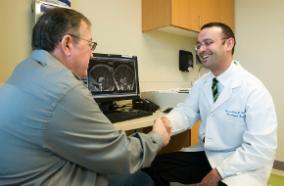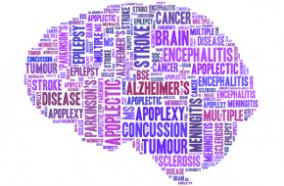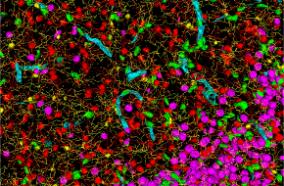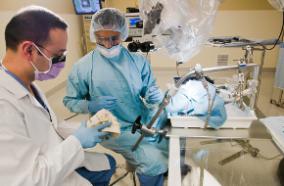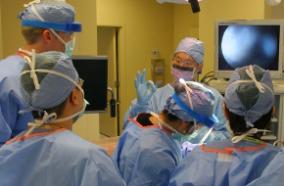2 days 12 hours ago
In health or medical studies, participants can often experience the outcome(s) of interest multiple times during the observation period, creating recurrent event data. Depending on the primary research objective, advanced statistical methods are required to correctly analyze this special type of data. This tutorial discusses 4 general frameworks, appropriate for analyzing recurrent events data: 1) extended Cox, 2) parametric survival, 3) longitudinal, and 4) multistate models. We present in...
Stavroula A Chrysanthopoulou
6 days 12 hours ago
Omega-3 polyunsaturated fatty acids (PUFAs) are essential for brain development and function, affecting inflammation, neurotransmission, and neuroplasticity. These nutrients are associated with benefits in managing stress, sleep disorders, anxiety, and mild cognitive impairment. This study investigated the effects of chronic exposure to varying omega-3 PUFA levels, from gestation to adulthood, on behavioral and molecular aspects related to memory, anxiety, and depression in male mice. Dams...
Santiago Bianconi
1 week ago
CONCLUSIONS AND RELEVANCE: In this cohort study of service members, clinical outcome clustering revealed key postdeployment subtypes that evolved over time. Cerebellar and brainstem volumes were significantly different by cluster. Regional differences were evident years before when stratified by these 10-year clusters. These findings underscore the need to appreciate not only the heterogeneity of brain injury but the heterogeneity of these mild TBI outcomes.
Christine L Mac Donald
1 week ago
CONCLUSION: Using FWE tractometry on a large clinical repository, we identified distinct pathology-specific patterns of white matter alteration. Glioblastoma showed extensive direct involvement and peritumoral microstructural changes, while oligodendroglioma demonstrated relatively preserved white matter architecture near tumor margins. These patterns reflect expected biological differences and provide a reproducible framework for characterizing extent of white matter involvement, with potential...
Daniel J Zhou
1 week 6 days ago
CONCLUSIONS: The bifrontal interhemispheric approach offers the ability to expose large and giant ACoA aneurysms and bilateral A2 vessel aneurysms, which allows an operative corridor for possible bypass revascularization. The results of this approach were excellent, with a low rate of aneurysm recurrence and complications.
Malia McAvoy
1 week 6 days ago
No abstract
Basant K Misra
1 week 6 days ago
Algae, including both eukaryotes and prokaryotes (cyanobacteria), play a crucial role in aquatic ecosystems. However, eutrophication caused by human activities has led to excessive algal blooms, degrading water quality. Traditional phytoplankton monitoring methods are limited in scale and cost, whereas remote sensing emerges as an efficient alternative, enabling broad and continuous analysis. Chlorophyll-a, a pigment found in algae and cyanobacteria, is a key indicator of phytoplankton biomass...
Guilherme Luiz Rissate
1 week 6 days ago
CONCLUSIONS: In this pilot study, quantitative smartphone pupillometry demonstrates the potential to be a useful tool in the future diagnosis of acute mTBI.
Anthony J Maxin
2 weeks ago
No abstract
Mark D Johnson
2 weeks ago
Rett Syndrome is a rare, x-linked genetic neurological disorder caused by MECP2 gene mutations. This progressive neurodevelopmental disorder hinders patients' ability to breathe and eat normally. It is unclear how Mecp2- deficiency results in a high percentage of dysphagia and aspiration pneumonia in patients with Rett syndrome. We aim to determine the effects of Mecp2 -deficiency on swallow related neuromuscular mechanisms contributing to dysphagia in Rett syndrome. Swallow and breathing were...
Luiz Marcelo Oliveira
2 weeks 2 days ago
INTRODUCTION: Colorectal cancer (CRC) screening rates among patients receiving care at multiple federally qualified health care centers (FQHCs) in New York city are low. Proactive outreach through mailed fecal immunochemical tests (FIT), reminders and navigation are evidence based interventions to improve CRC screening rates but remain untested in this study population.
Aasma Shaukat
2 weeks 4 days ago
CONCLUSIONS: In patients undergoing resection of growth hormone-secreting tumor for treatment of acromegaly, microscopic invasion of tissues is relatively common and portends an increased risk of failure of surgical biochemical remission. Identification of microscopic invasion may allow for more aggressive surgical management and better chances of surgical control of disease.
Jessica C Eaton
3 weeks ago
CONCLUSIONS: In adults presenting to Level I trauma centers for acute mTBI, symptom burden (RPQ total score) is robustly associated with 3-month symptom outcome. The RPQ, which can be completed in about 3 min, may support recognition of mTBI symptoms in the ED and risk stratification for triage into appropriate follow-up pathways.
Samuel Gray
3 weeks ago
CONCLUSIONS: Results indicate role strain experienced by OB nursing students, regardless of gender identification, continues to be a significant factor in the current clinical environment. Educators can utilize this awareness of increasing role strain in the context of sociocultural influence among students in the OB clinical setting to improve the student experience.
Amy S D Lee
3 weeks ago
CONCLUSIONS: Our multisite study showed that neuroradiologists performed better than AI for IA detection in terms of sensitivity and accuracy, while while achieving comparable specificity.
Babatunde J Akinpelu
3 weeks ago
CONCLUSIONS: While surgical care provided favorable short-term functional outcomes, long-term survival for children with pLGGs in Kenya remains substantially low. These findings call for urgent development of robust pediatric neuro-oncology multidisciplinary care and structured long-term follow-up pathways.
Philip Maseghe Mwachaka
3 weeks 1 day ago
CONCLUSION: These simple, practical, cost-effective tools have utility for estimating preoperative fitness to rule out low fitness. These tools could be utilised by perioperative clinicians for identifying patients who may not require preoperative cardiopulmonary exercise testing, thereby optimising resource allocation.
Brendon H Roxburgh
3 weeks 1 day ago
No abstract
Andrew H Ko
3 weeks 1 day ago
CONCLUSIONS: Primary care clinics that implement office-based addiction treatment by nurses increase patient-years of opioid use disorder (OUD) treatment in male but not female patients. Exploratory findings suggest that differences in the proportion of patients treated for OUD, rather than differences in the duration of OUD treatment, account for observed differences across groups.
Katharine A Bradley
3 weeks 2 days ago
Somatosensory perception largely emerges from diverse peripheral sensory neurons whose cell bodies reside in dorsal root ganglia (DRG). Damage or dysfunction of DRG neurons is a major cause of chronic pain and sensory loss. In mice, deep single-cell transcriptomic profiling and genetically defined models have offered important clues into DRG function, but in humans, the cellular and molecular landscape of DRG neurons remains less understood. Here, we constructed a reference cell atlas of the...
Shamsuddin A Bhuiyan
"university of washington"[affiliation] and neurological surge...: Latest results from PubMed
More posts about UW Neurological Surgery Recent PubMed Publications

